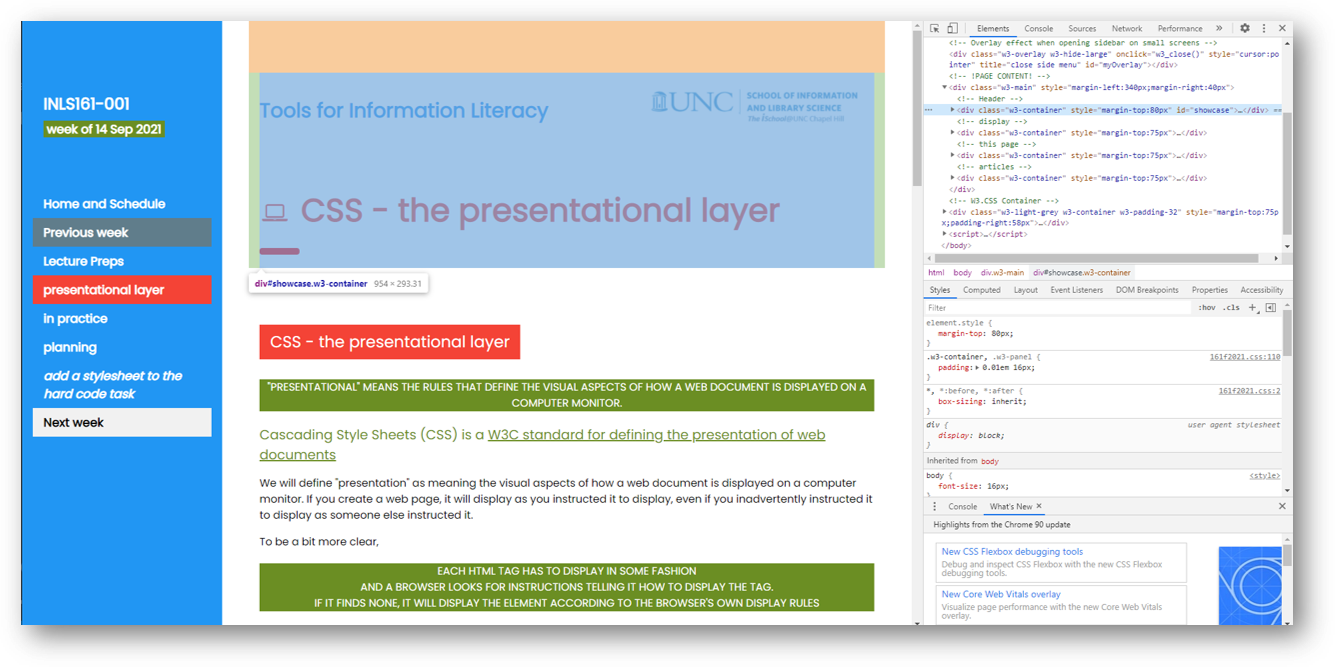
Tools for Information Literacy
CSS - the presentational layer
CSS - the presentational layer
"Presentational" means the rules that define the visual aspects of how a web document is displayed on a computer monitor.
Cascading Style Sheets (CSS) is a W3C standard for defining the presentation of web documents
We will define "presentation" as meaning the visual aspects of how a web document is displayed on a computer monitor. If you create a web page, it will display as you instructed it to display, even if you inadvertently instructed it to display as someone else instructed it.
To be a bit more clear,
each HTML tag has to display in some fashion.
and a browser looks for instructions telling it how to display the tag.
If it finds none, it will display the element according to the browser's own display rules
For example, this page shows how several basic tags display when the page provides no specific instructions telling it what to do. In this case, the browser defaults to its own set of display rules.
The second example is the same HTML, but has a link in line 09 of the code to the CSS stylesheet for the fall 2020 INLS161-001 website.
The third example is the same HTML, but has a link in line 12 of the code to a second CSS stylesheet.
Toggle back and forth to see the difference.
These display rules can be applied to one or more pages and then any change made to the rules will apply to all pages linked to the rules.
W3Schools has a similar example.
CSS elements/rules benefits
back to top
Let's look at this page in terms of its CSS elements and rules

You can see how the page title container is a <div> element, with specific CSS instructions telling it how to display.
CSS elements/rules benefits
back to top
Benefits of CSS
Greater typography and page layout controls
Greater control over how your type displays; you can be explicit in your definitions
Less work
One edit, multiple simultaneous corrections; really useful in a large site
Potentially smaller documents
You need only create a link to a single list of rules, rather than recreate the rules in each page you create.
Let's go back and look at our MSWord-created page for a comparison. It has all the display rules for all the possible tags embedded in the page file.
Potentially more accessible documents
Though it is easier to control the placing of objects on a web page using visual tools such as tables, such tables are not always useful for all users.
CSS guidelines allow you to build pages that are accessible by a far wider span of potential users.
Presentational HTML is on its way out
Mixing the rules about what an object means and how it should look on a single page is a thing of the past.
Even though current browsers still support such activities, eventually they will drop this ability and all pages will need to conform to the CSS standard
You will follow CSS rules for your task 02, so it would be a good idea to get used to them now
CSS is well-supported
The CSS3 specification is the latest complete standard for Cascading Style Sheets. CSS3 is completely backwards-compatible with earlier versions of CSS.
CSS elements/rules benefits